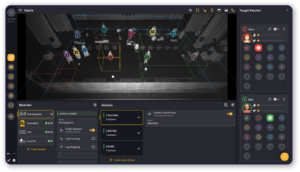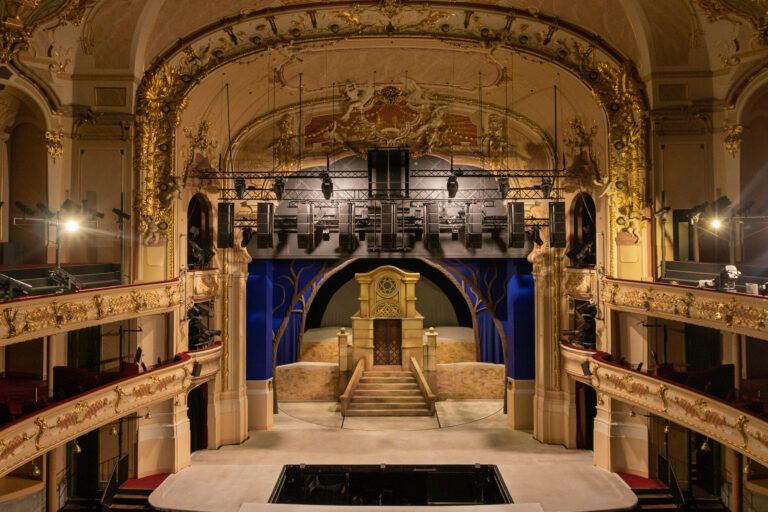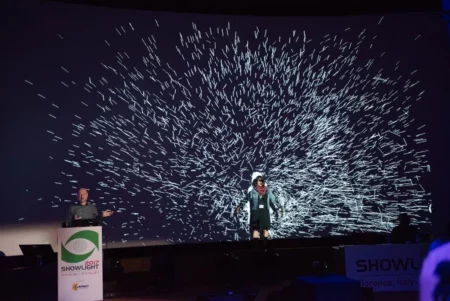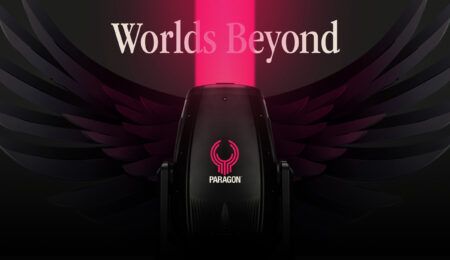Located in Prague’s Karlín district, the Karlín Musical Theatre is the third oldest and second largest theatre in the Czech capital. Famous for its staging of musical productions and operettas, the majority of the theatre’s shows are musicals. The venue recently sought to upgrade its audiovisual technology. As part of this update, it invested in Naostage’s automatic and beaconless tracking solution, K System.
Leading the installation was Petr Šťásek, technical consultant at Pro Music, Naostage’s newly appointed distributor for Czech Republic and Slovakia. The technical team installed an L-Acoustics L-ISA audio system with a nine-cluster frontal system providing high horizontal resolution. “The next logical step was to track the actors on stage, so the corresponding audio objects move seamlessly with them, allowing the audience to hear the vocals naturally from the direction of the actors,” he explains.
Before the installation, the team carried out a test of the system to assess its capabilities at Pro Music’s local UFFO theatre in Trutnov, also equipped with a similar spatial audio system.
After conducting a thorough market analysis, Šťásek, who first heard about Naostage at ISE 2024 in Barcelona, decided that the company’s K System was the most suitable tracking solution, due to its computer vision and AI technology. Supported by RF beacon identification, the setup is designed to provide precise and seamless tracking of the actors.
The venue wanted to be able to track at least 16 actors at the same time, as accurately as possible during a single show. “It’s a very challenging environment,” explains Šťásek. “Each show brings more complexity, with numerous decorations on stage and actors wearing elaborate costumes.”
“In my opinion, K System is the most advanced tracking solution in the market,” he says, particularly praising it for flexibility, precision and its automation capabilities.
In Karlín Musical Theatre, the technical team installed one AI processing server, Kore, to track up to 16 performers from a single box; Kratos, the software that controls the entire system, manages automation and sends tracking data in real time to third-party audiovisual systems; and two Kapta visual sensors, made up of multi-spectral cameras, rigged above the stage area, to scan the space in 3D and in real time, one under the centre speaker cluster and the other in the back of the proscenium.

It was important for the Karlín Musical Theatre to ensure a cohesive audiovisual experience for the audience; with multiple performances a week, the team needed a system that was reliable and would save time for the technical teams on site.
“Using L-ISA audio system, each audio object, such as microphone, instrument and effect, was supplemented with parameters for panorama, depth, width and auxiliary send,” says Šťásek. “This configuration determines the precise location and manner in which each sound is heard by the audience.”
In the theatre, the technical team installed nine frontal clusters, rigged across the stage to optimise the auditory experience.
In the theatre, K System provides precise positioning data in XYZ coordinates, which are translated into panorama and depth information for individually tracked actors. Their voices, captured by wireless microphones, are transmitted to a spatialised sound system, allowing convergence of sound and image. “If the horizontal difference between the visual location of the actors on stage and the audio source is less than 7.5°, the human brain merges the sound with the visual perception,” says Šťásek. “This makes the performance sound much more natural, as the audience can hear exactly who is singing because the human brain naturally localises the sound source.”
He adds that this set-up benefits the majority of the audience and not only those sitting in the centre, sweet spot, “unlike traditional stereo setups where the voice may seem to come from off-stage”.
Due to the theatre’s historical significance, the integrator faced the challenge of installing the devices in suitable locations. “We needed to be discreet in placing the Kaptas in optimal positions in a crowded stage, to avoid interference with moving decorations and other stage technologies,” Šťásek explains. “It was crucial for the system to have an unobstructed view and not intervene with the theatre’s scenography, sightline and architecture.”
He praises K System, stating: “Without K System it would not have been possible to manage the positioning of audio objects for 16 dancing and singing actors moving across the whole stage during a live musical or theatre performance.”
“This was an interesting project for us, in a challenging environment. We’re extremely happy with the result as the theatre is currently running six musical performances a week and the system simply works,” Šťásek concludes.





